


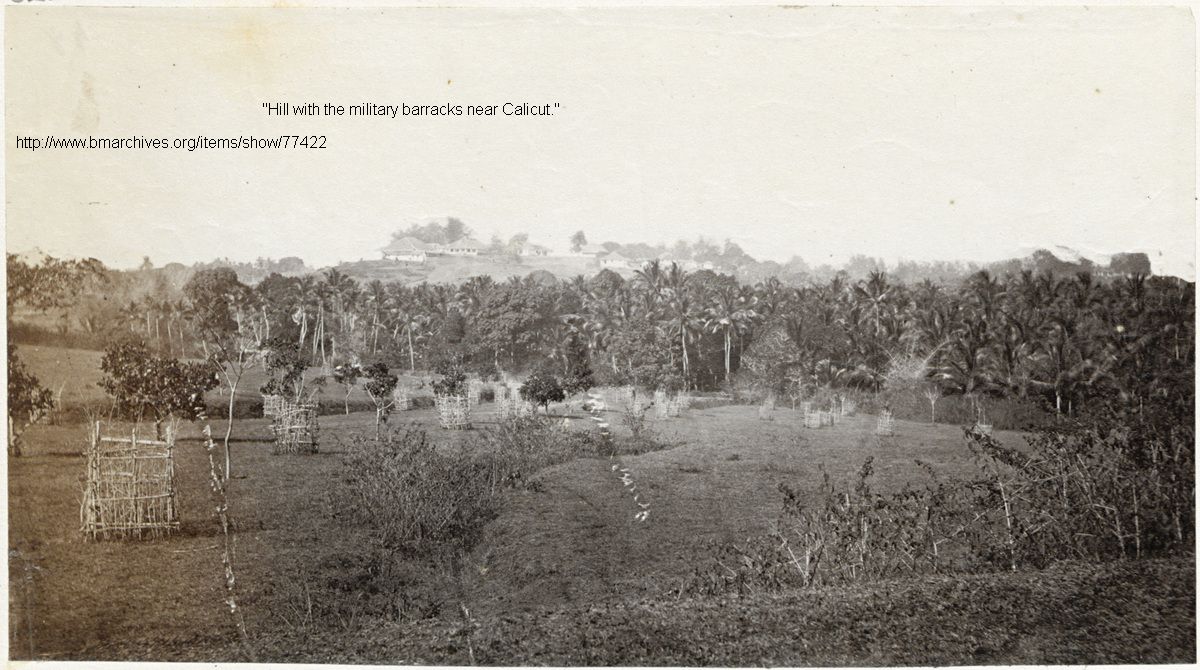
Kozhikode is a town with a long recorded history. From time immemorial, the city has attracted travellers with its
prosperity. It has traded in spices like black pepper and cardamom with Jews, Arabs, Phoenicians, and Chinese for more
than 500 years. As Kozhikode offered full freedom and security, the Arab and the Chinese merchants preferred it to all
other ports. The globe-trotter Ibn Batuta (A.D. 1342–47) said, "We came next to Kalikut, one of the great ports of the
district of Malabar, and in which merchants of all parts are found."
The geographical conditions of city area and suburban areas are similar to the other parts of the district falling in
coastal and midland zones. The region comprising Kozhikode Corporation and peri-urban blocks belong to the low- and
midlands in the typical classification of land in Kerala as low-, mid- and highlands. Lagoons and backwaters
characterise the lowland, which receives runoff from the rivers. The lowland is often subjected to salinity intrusion.
The coastal plains exhibit more or less flat, narrow terrain with landforms such as beach ridges, sandbars, and
backwater marshes. A few kilometres from the sea to the east, the surface gathers into slopes and clustering hills with
numerous valleys in between formed due to floods and sediment transport. The Midlands is represented by hummocky rocky
terrain with lateritised denudational hills and intervening valley fills (locally called elas). The 'elas' are fairly
wide in the lower reaches of midlands and narrow towards the upper parts of the midlands.
Kozhikode features a tropical monsoon climate. The city has a highly humid tropical climate with high temperatures
recorded from March to May. A brief spell of pre-monsoon Mango showers hits the city sometime during April. However,
the primary source of rain is the South-west monsoon that sets in the first week of June and continues until September.
The city receives significant precipitation from the North-East Monsoon that sets in from the second half of October
through November.
The city has a reasonably well-developed transport infrastructure. A large number of buses, predominantly run by
individual owners, ply on the major routes within the city and to nearby locations. City buses are painted green. Kerala
State Road Transport Corporation (KSRTC) runs regular services to many destinations in the state and to the neighbouring
states. The city has three bus stands. All private buses to the suburban and nearby towns ply from the Palayam Bus Stand.
Private buses to adjoining districts start from the Mofussil Bus Stand (one of the largest bus stand in Kerala) on
Indira Gandhi Road (Mavoor Road). Buses operated by the KSRTC drive from the KSRTC bus stand on Indira Gandhi Road.
KSRTC Bus Stand Kozhikode is the biggest bus stand in Kerala having a size of 36,036.47 meter square. There are also
KSRTC depots in Thamarassery, Thottilpalam, Thiruvambady and Vatakara in the district.
The history of railways in Malabar dates to 1861 when the first tracks were laid between Tirur and Beypore.Kozhikode
railway station is the only A1 railway station in Palakkad railway division; it is in the Shoranur-Mangalore section.
Today, Kozhikode is well connected by rail to cities like Thiruvananthapuram, Kochi, Kollam, Palakkad, Coimbatore,
Katpadi, Vellore, Hyderabad, Chennai, Bangalore, Kannur, Mangalore, Mumbai, New Delhi, Vijayawada and Visakhapatnam.
Calicut International Airport is 26 kilometres (16 mi) from the city at Karipur. Regular domestic services are operated
to major Indian cities. There are frequent international flights to the Middle Eastern air hubs like Dubai, Abu Dhabi,
Salalah, Muscat, Dammam, Riyadh, Sharjah, Bahrain, Doha and to domestic hubs Chennai, Hyderabad, Bangalore, Mumbai and
New Delhi.
The popularity of the Kappad Beach is owing to the fact that it was the place where Vasco da Gama, the famous world
explorer first set his foot. A stone monument is erected on the beach to commemorate the significant historical event.
This rock studded beach is called by the locals as Kappakkadavu. It is considered to be the gateway to the Malabar Coast.
Tourists can reach Kappad by availing the backwaters that offers an enjoyable experience. They can reach the beach by
taking a ride down the backwaters through the River Korappuzha.
The Kozhikode Beach is situated near the town of Kozhikode and is known for its old world charm and natural beauty. The
beach has two crumbling piers that stand toward the middle of the sea and each of them are them are more than hundred
years old. The beach also houses a lighthouse, Marine Water Aquarium and Lions Park. The beach is a perfect setting for
tourists wanting to enjoy the sunrise or sunset.
Beypore is a small village situated at the mouth of Chaliyar River, at a distance of 10 km to the south of the Kozhikode
town. Previously, it was known as ‘Sultan Pattanam’ during the reign of Tipu Sultan and as ‘Vaypura’ by the locals. The
Beypore Port has a historical significance as it was one of the ports where trading commenced between Asia and the Middle
East and was considered an important maritime and trade centre. This village was also popular as a centre for
shipbuilding, meeting the demands of the merchants from Western Asia and mainly constructed traditional ships like the
Uru or Arabian trading vessel. The 1500 year old tradition of shipbuilding is still carried on by the locals.
The Kadalundi Bird Sanctuary is situated at a distance of 19 km from Kozhikode and has a river running across it. It is
spread over a cluster of islands and is surrounded by hillocks, where the River Kadalundi flows into the Arabian Sea. The
hillocks provide a good view of the sea and the river mouth. The place is locally known as Kadalundi Nagaram. The
sanctuary houses some 100 different species of native birds and more than 60 species of migratory birds such as terns,
seagulls, sandplovers, sandpipers and many more. A variety of flora and fauna and several kinds of fishes, crabs and
mussels can also be found in this sanctuary.
The Tali Temple is situated near Manachira and is considered one of the most ancient and distinct temples of Kozhikode.
The history of this temple dates back to the period of the Zamorin rule. During that time, it was the venue of an annual
competition of pedagogic skills called Revathi Pattathanam. It is basically a Shiva temple and attracts numerous visitors
and pilgrimages. In the quadrangle shaped central shrine of Lord Shiva, a Shivaling is found that has a height of 2 ft.
This children’s theme and amusement park is located next to the popular light house on the Calicut beach. The theme park
offers various rides for both the children and the parents. The park is also the ideal setting for enjoying good view of
the sunset.
Mananchira Square is the palace tank of King Vikrama, one of the great rulers in the region. It is situated in the heart
of the city and is named after the Mananchira pond that spans an area of a square kilometre. While the place derived the
name from the pond, the pond derived its name from the ruler of Zamoothiri Kingdom known as Manadevan. The palace tank
has a traditional architectural design and is reminiscent of the ancient times. The Square is inclusive of the Mananchira
Square, pond or Mananchira and Old Krishanamenon part comprising of the musical fountain. The Mananchira Square is
surrounded by temples, churches, mosques and several traditional houses. The whole square is encircled by a
laterite-sculpted wall and the area is carpeted with green grass.
Kozhikode was the capital of Malabar during the time of Sri Samoothiri Maharajas, who ruled the region before the British
took over. The city's first recorded contact with Europe was when Vasco da Gama landed at Kappad (18 km north) in May
1498, among the leaders of a trade mission from Portugal. He was received by his highness Sri Samoothiri Maharaja.
Feroke is a prominent administrative and commercial town located adjacent to the city of Kozhikode.The remnants of Tipu
Sultan’s Fort area telltale of the Mysore Emperor’s dream to make Farookabad, now Ferok, his new capital, but that dream
was never realized. Known as Farookabad during the reign of Tipu Sultan, he wanted to make Farookabad
(meaning ‘town of victory’) his capital when he conquered Malabar in 1788.But it came under the jurisdiction of the
British when he was defeated.
Geography and Climate
Geography
A number of rivers originating from the Sahyadri run along the outer reaches of the city. These include the Chaliyar
puzha, Kallayi Puzha, Korapuzha river, Poonoor puzha (river), and Iravanjhi puzha. Of these, Kallai river that runs
through the southern part of the city has been the most important culturally and historically for Kozhikode. The Kallai
River has its origin in Cherikkulathur village. It is connected with Chaliyar on the south by a man-made canal. The river
passes through Cherukulathur, Kovur, Olavanna, Manava and Kallai before finally joining the sea near Kozhikode. The
length of the river is 22 kilometres (14 mi).
The Korapuzha river is formed by the confluence of the Agalapuzha with the Punnurpuzha, and it joins the sea at Elathur.
The Agalapuzha is more or less a backwater while the Punnurpuzha originates from Arikkankunni. The total length of the
river is 40 kilometres (25 mi). Panurpuzha is a tributary of Korapuzha. It passes through the northern boundary of the
study area and joins to the sea. The river is perennial.
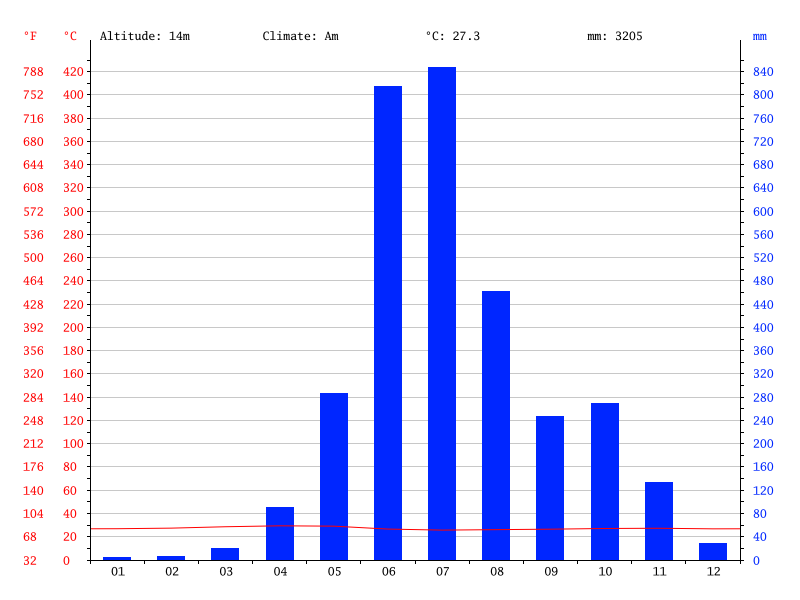 Climate
Climate
The average annual rainfall is 3,266 mm. The weather is milder from December/January until March when the skies are
clear and the air is crisp. Winters are seldom cold.The highest temperature recorded was 39.4 °C in March 1975. The
lowest was 14 °C recorded on 26 December 1975.
Transport
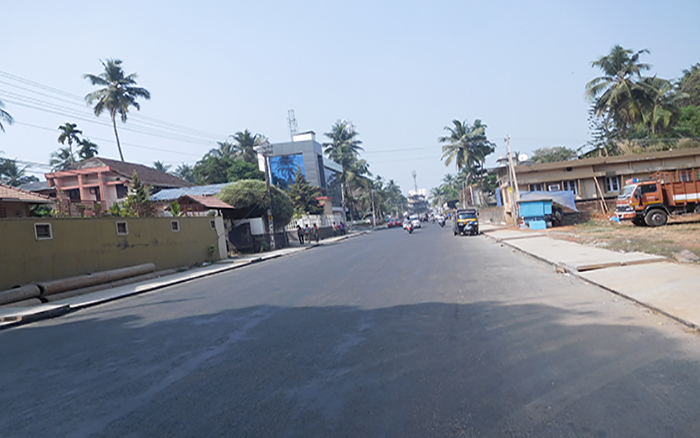 By Road
By Road
There are two routes available to Bangalore. One is Kozhikode–Gundlupet–Mysore–Bangalore; this road is most preferred one
but is very busy. Another route, less used, is Kozhikode–Gundlupet–Chamarajanagar–Kollegal–Bangalore.
Private tour operators maintain regular luxury bus services to Mumbai, Bangalore, Coimbatore, Chennai, Vellore, Ernakulam,
Trivandrum, Ooty etc. and mainly operate from the Palayam area. These are usually night services.
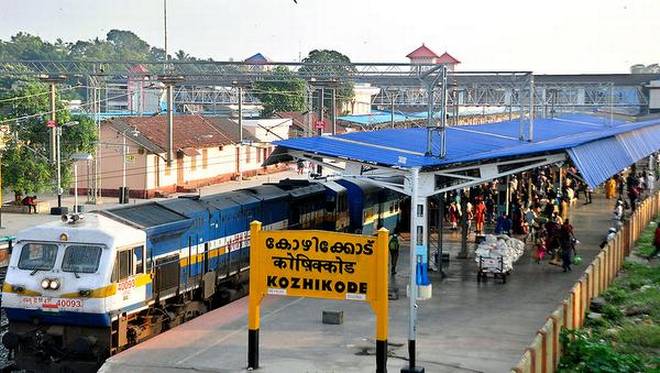 By Rail
By Rail
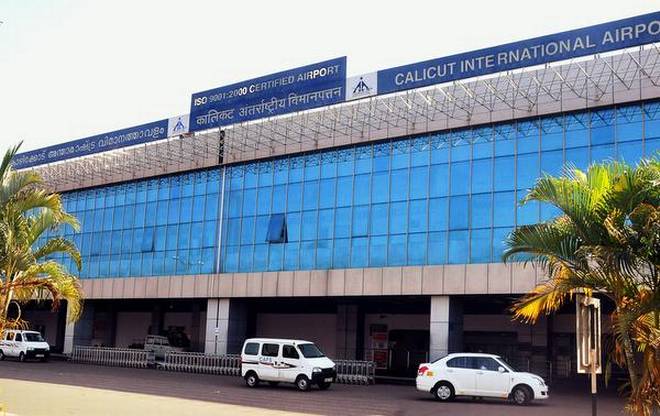 By Air
By Air
Tourists Places in Kozhikode
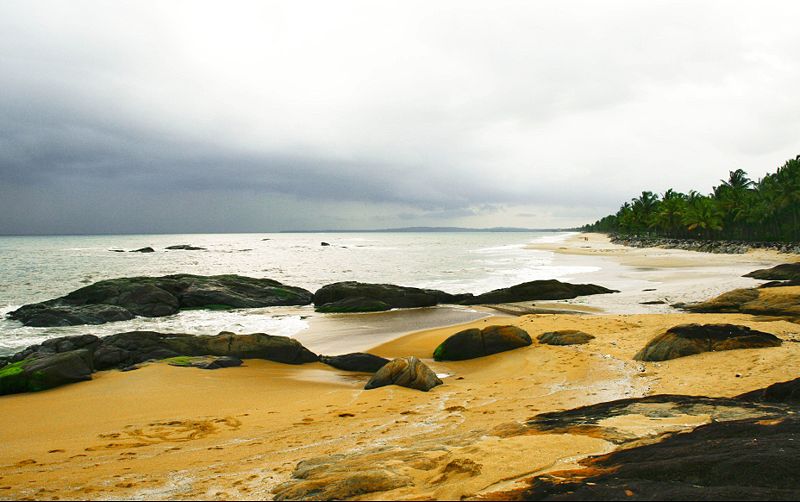
Kappad Beach
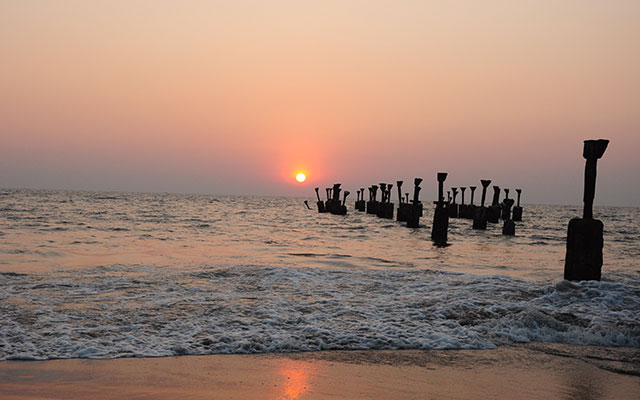
Kozhikode Beach

Beypore Beach
The main buyer of these ships are the Arabs and the ships are built as per the needs and specifications of the buyers.
Tourists can enjoy the art of shipbuilding in this village by observing the manner in which the Uru takes shape with
minimal sophistication in production. Discipline and work ethics are observed by the whole team that enable them to work
as a team and execute the highly intricate woodwork to perfection with their alert minds and deft fingers.
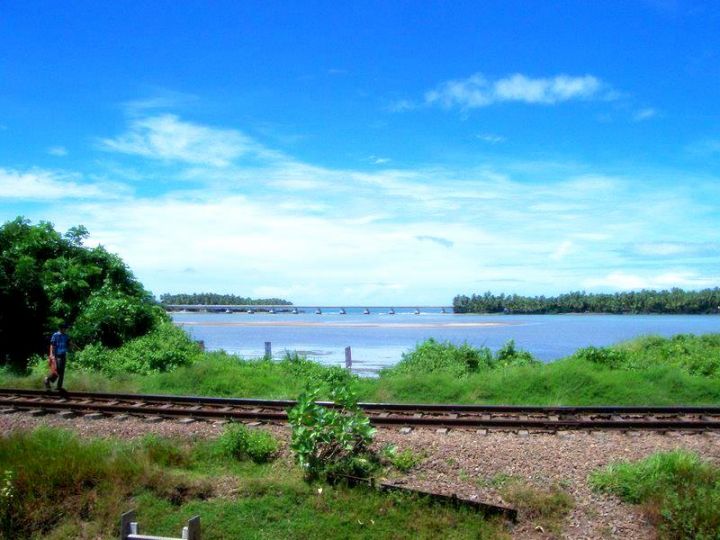
Kadalundi
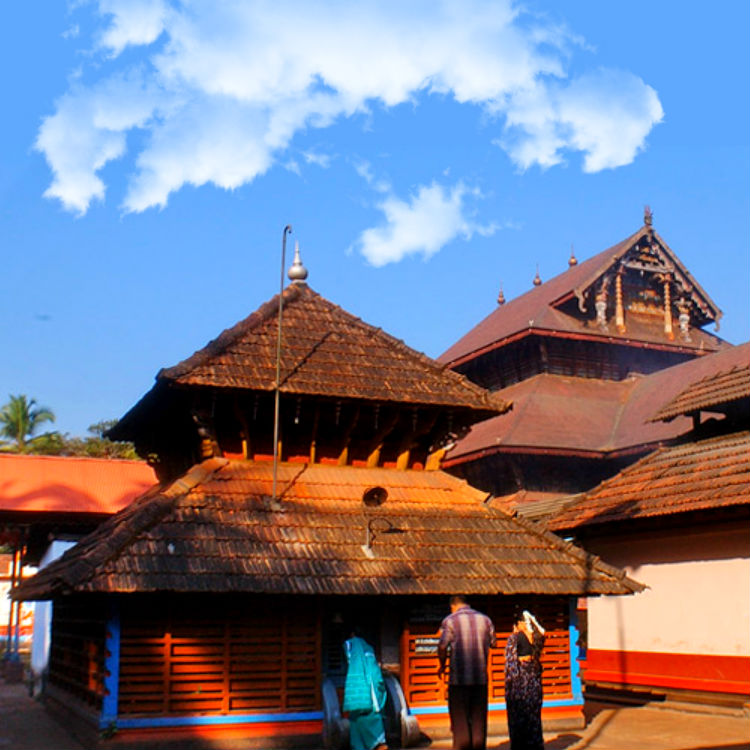
Tali Temple
The temple is a rare example of Kerala style of architecture and is built of laterite and wood. The sanctum contains the
image of the momentous event of the Mahabharata battle. Everyday, five different religious ceremonies are performed in
the Tali Temple. The temple organizes a seven day festival that centres on the religious icons of the temple. The festival
is celebrated during the period of Malayalam New Year.

Lion's Park

Mananchira Square
The Square comprises various important buildings including the Public Library, Town Hall and Commonwealth Trust office.
It was primarily the main courtyard of the Zamorin Rulers palace but presently, it has been converted into a beautiful
park. The ‘Maithan’ has been changed to an arcadia with trees and plants, shrubs, artificial hill and sculpture. Besides
a musical fountain, the Square comprises of an artificial stream, open-air theatre and music stage.